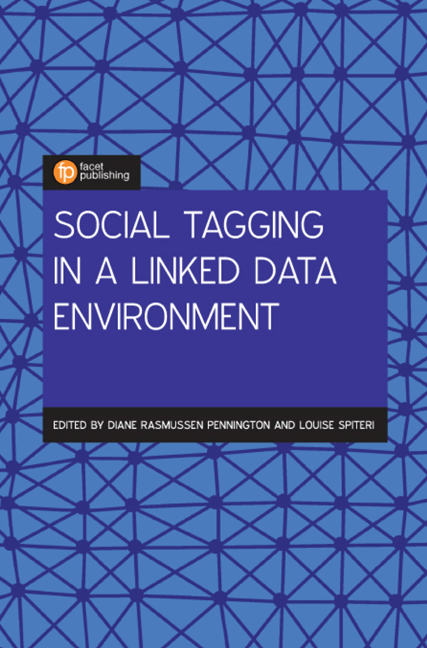Book contents
- Frontmatter
- Contents
- List of figures and tables
- Contributors
- 1 Introduction: the continuing evolution of social tagging
- 2 Tagging the semantic web: combining Web 2.0 and Web 3.0
- 3 Social tags for linked data with Resource Description Framework (RDF)
- 4 Social tagging and public policy
- 5 Hashtags and library discovery systems
- 6 Social information discoverability in Facebook groups: the need for linked data strategies
- 7 #FandomCommunication: how online fandom utilises tagging and folksonomy
- 8 Keys to their own voices: social tags for a dementia ontology as a human right
- 9 Social tagging and the enterprise: an analysis of social tagging in the workplace
- 10 Use and effectiveness of social tagging recommender systems
- Index
2 - Tagging the semantic web: combining Web 2.0 and Web 3.0
Published online by Cambridge University Press: 01 June 2019
- Frontmatter
- Contents
- List of figures and tables
- Contributors
- 1 Introduction: the continuing evolution of social tagging
- 2 Tagging the semantic web: combining Web 2.0 and Web 3.0
- 3 Social tags for linked data with Resource Description Framework (RDF)
- 4 Social tagging and public policy
- 5 Hashtags and library discovery systems
- 6 Social information discoverability in Facebook groups: the need for linked data strategies
- 7 #FandomCommunication: how online fandom utilises tagging and folksonomy
- 8 Keys to their own voices: social tags for a dementia ontology as a human right
- 9 Social tagging and the enterprise: an analysis of social tagging in the workplace
- 10 Use and effectiveness of social tagging recommender systems
- Index
Summary
Introduction
As Sir Tim Berners-Lee states in his TED talk The Next Web of Open, Linked Data (TED, 2009), the topic of linked data does not exclusively pertain to expert information technology (IT) developers, but to all of us. Data are a substantial part of our everyday lives more than we may realise: all the actions we carry out on social networking sites produce data, which are then reused for various purposes by major organizations. At present, an authentic data exchange across social networks has not been achieved, as data are still locked in silos, preventing interoperability. Berners-Lee offers an example of the potential of combining social tagging with linked data requirements, explaining how he could add information about the location where the TED talk was occurring on the OpenStreetMap, a wiki resource (www.openstreetmap.org/#map=5/54.910/- 3.432). People add content to the wiki and contribute to the creation of new information in a linked environment: this is the concept underlying linked data expressed at its simplest level.
The aim of this chapter is to illustrate examples of applications in which social tagging is combined with linked data and semantic web principles, in order to demonstrate how social tagging can benefit from linked data and vice versa. The chapter begins with a brief explanation of the main features of the semantic web and linked data. After an outline of the key principles characterising Web 2.0, attention will focus on the relationship, tested and potential, between the semantic web and Web 2.0, through the outline of frameworks and applications used to investigate and attempt such integration. All the frameworks presented aim to enhance social tagging, overcoming its main flaws through linked data implementation. On the other hand, the popularity and the collaborative character of social tagging help the expansion of the semantic web. Reflections on future directions and recommendations for best practice will conclude this chapter.
The semantic web and linked data
When Tim Berners-Lee invented the web, his intention was to create a virtual environment where anyone could add and share documents. He soon realised, however, that his idea had not developed in the way he had hoped and he decided to work on a new project, with the aim of having data on the web, rather than only documents: ‘I want to think about a world where everybody has put data on the web …
- Type
- Chapter
- Information
- Social Tagging for Linking Data Across Environments , pp. 11 - 38Publisher: FacetPrint publication year: 2018



